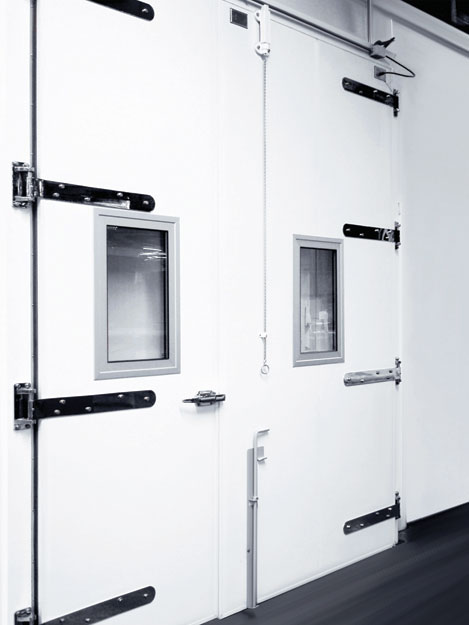Cold Storage Door Systems
Learning Objectives:
- Assess the development of cold storage facilities, standards, and organizations focused on improving performance and operation.
- Compare the design needs of different cold storage facilities to the common types of cold storage doors currently available.
- Identify the options for the construction and fabrication of cold storage doors in common applications.
- Determine the installation differences between typical types of cold storage doors.
Credits:
Cold storage is a large and growing industry in the U.S. and other developed nations around the world. Primarily used for storing and distributing perishable food items such as meat, dairy products, poultry products, fruits, nuts, and vegetables, these facilities have become essential to the availability of these foods. Currently estimated at over 16 billion cubic feet worldwide, they take the form of public, private, and semi-private refrigerated warehouses.
Cold storage facilities are also found as an integrated part of many building types including supermarkets, retail locations, restaurants, food processing plants, institutional facilities, cold storage warehouses, food service operations, prisons/correctional compounds, and warehouse distribution centers. The construction of these facilities is fairly straightforward, relying on thickly insulated walls and appropriately sized cooling systems to deliver the required refrigerated temperatures. From an architectural standpoint, the flow of people and equipment into and out of these cold storage rooms or buildings becomes the key design issue. Central to that issue is an understanding of the options for doors and their construction in these cold storage locations.
Cold Storage Overview
Keeping things cold while in storage has been a design challenge since the 1800s in this country. Without any modern day refrigeration, ice was the main source of cooling and was harvested during winter for use year round. For it to last, it was stored underground or in enclosures filled with things like sawdust for insulation. The emergence of the household “ice-box” and the selling of blocks of ice by truck in cities meant that perishable food could be kept cool, although not particularly well controlled in homes. It also created a demand for more perishable food and for stores and warehouses to have the same capacity to keep larger quantities cool.

Photo courtesy of Chase Doors
Doors used for cold storage operations are a specialty product designed for energy and workflow performance.









